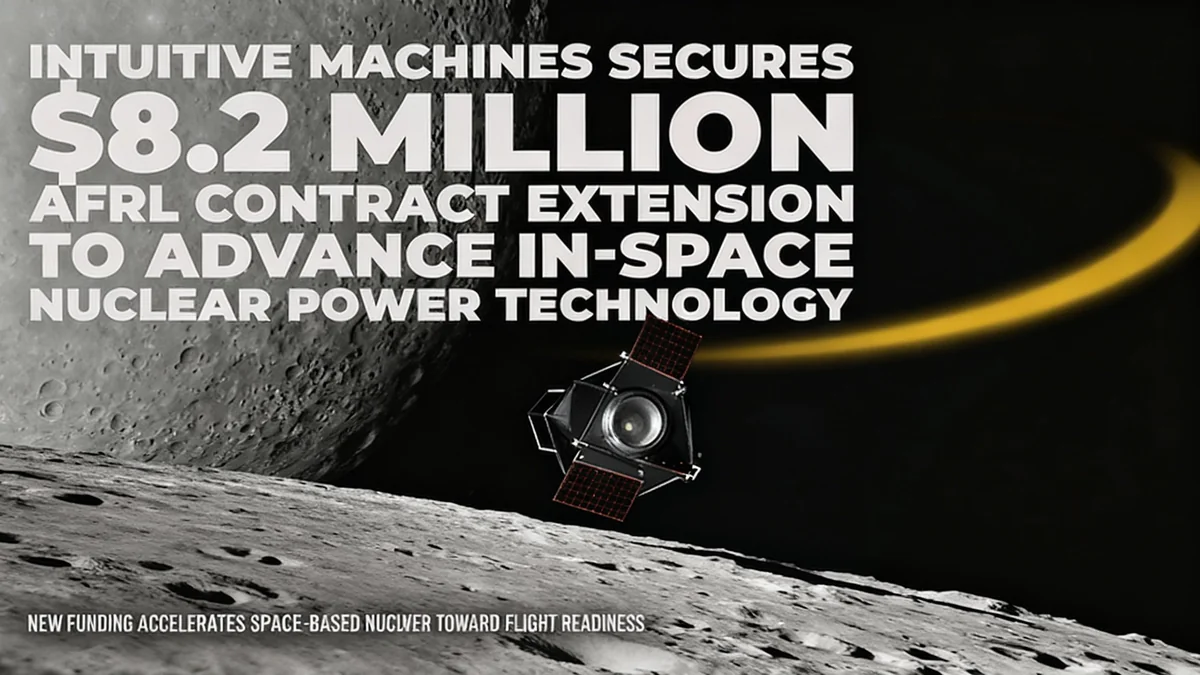The rapid expansion of artificial intelligence is placing an unprecedented strain on global energy and land resources, creating a significant bottleneck for technological progress. To address this challenge, industry leaders and government agencies are exploring a novel solution: placing massive data centers in low Earth orbit (LEO) to harness space-based solar power and reduce the environmental footprint on our planet.
Key Takeaways
- Artificial intelligence is driving a massive increase in demand for energy and data processing, straining terrestrial infrastructure.
- Placing data centers in low Earth orbit is being explored as a solution to access constant solar power and free up land resources.
- While offering benefits like enhanced security and energy efficiency, orbital data centers face significant challenges, including space-based threats, high launch costs, and a lack of international regulation.
- Gulf nations, particularly the UAE and Saudi Arabia, are heavily investing in their space economies and could play a pivotal role in developing this new sector.
The Growing Strain of AI on Earth's Resources
The computational power required to train and operate modern AI systems has led to a surge in the construction of large-scale data centers. These facilities consume vast amounts of electricity for processing and cooling, placing immense pressure on national power grids. According to research from McKinsey, an estimated US$6.7 trillion in investment will be needed by 2030 to meet the growing demand for data processing infrastructure.
This escalating energy consumption directly conflicts with global net-zero emissions targets. Furthermore, hyperscale data centers require significant land and water resources, often creating environmental challenges for local communities. This has forced the technology industry to consider unconventional solutions to sustain the growth of AI.
A Warning from Industry Leaders
The severity of the issue was highlighted during a US Congressional hearing in April 2025. Former Google CEO Eric Schmidt testified that the AI revolution and its promised prosperity are entirely dependent on a "modern, resilient, and vastly expanded energy infrastructure." His statement underscored the urgency of finding sustainable energy sources for the digital age.
Traditional alternative energy sources face limitations. Nuclear power expansion is hindered by regulatory hurdles in many countries. Solar power, while promising, is limited by weather patterns, day-night cycles, and energy storage challenges on Earth. These constraints are pushing innovators to look toward space.
Looking to the Stars for a Solution
The concept of moving data infrastructure into space is gaining serious traction. Shortly after his congressional testimony, Eric Schmidt acquired Relativity Space, a rocket manufacturing company, with the goal of developing the capability to launch data centers into orbit. This move positions him to compete with established players like SpaceX in the commercial space launch market.
The core idea is to build data centers that orbit the Earth, powered by large solar arrays. In space, these solar panels can operate with much greater efficiency and consistency than their terrestrial counterparts.
The Advantages of Space-Based Power
Solar arrays in orbit can be up to 40 percent more efficient than those on the ground. This is because they are not affected by atmospheric interference, cloud cover, or the transition between day and night, allowing for a continuous and reliable power supply.
Government bodies are also investigating the viability of this approach. In 2024, the European Commission initiated the ASCEND project (Advanced Space Cloud for European Net Zero Emission and Data Sovereignty) in partnership with Thales Alenia Space. The project's objective is to study the technical feasibility and environmental impact of orbital data centers, aligning with the EU's goal of achieving net-zero carbon emissions by 2050.
Private Sector Ventures Take Flight
While government studies are ongoing, a number of private companies have already entered the orbital data center market. These pioneers are developing the technology and business models for what could become a critical new industry. Key players include:
- Starcloud (US): Focused on creating a network of orbital data processing and storage platforms.
- Lonestar Data Holdings (US): Aims to provide secure, off-planet data storage solutions.
- Axiom Space (US): A commercial space station developer that sees data centers as a key service.
- ADA Space (China): A Chinese company working in partnership with the state-supported Zhejiang Lab to develop its own space-based data infrastructure.
Benefits and Hurdles of Orbital Data Centers
Beyond solving energy and land use problems, LEO data centers offer several other potential advantages. One of the most significant is improved security. By being physically disconnected from terrestrial networks, these facilities are insulated from natural disasters like earthquakes and floods that can cripple ground-based infrastructure.
This physical separation also provides a unique defense against certain types of cyberattacks that rely on direct network access. Additionally, orbital data centers could offer reduced latency for data transmission. Light travels approximately 31 percent faster in the vacuum of space than through fiber optic cables, meaning data routed through a mesh of interconnected satellites could potentially reach its destination more quickly.
"The AI-powered technological revolution and the prosperity it promises depend entirely on a modern, resilient, and vastly expanded energy infrastructure." - Eric Schmidt, former CEO of Google
New Environment New Threats
Despite the potential benefits, operating complex electronic systems in space presents a unique set of challenges. Orbital assets are vulnerable to a range of threats not encountered on Earth. These can be categorized into three main areas: physical attacks, cyber attacks, and natural phenomena.
Physical threats include anti-satellite (ASAT) weapons, which can be either kinetic (designed to destroy a satellite by colliding with it) or directed-energy (using lasers or microwaves to disrupt communications). A hostile actor could also deploy a nuclear device in orbit, creating a devastating electromagnetic pulse or a cloud of debris that could destroy nearby satellites.
Cybersecurity remains a major concern. Adversaries could attempt to disrupt communications between the data center and ground stations, intercept sensitive data, or inject malicious software. The natural space environment also poses risks, including solar flares, geomagnetic storms, and micrometeoroid impacts that can damage sensitive hardware.
The Uncharted Territory of Space Law
A significant hurdle is the lack of a modern legal framework for activities in space. The foundational 1967 Outer Space Treaty was drafted long before the rise of private space companies and the concept of cloud computing. The treaty addresses jurisdiction over physical objects in space but is silent on the data they process.
This creates a legal gray area. It is unclear which national or international laws would apply to data stored and processed in orbit. This regulatory uncertainty must be addressed to ensure data privacy and establish clear lines of accountability for commercial operators.
The Role of Emerging Space Economies
As the world explores orbital solutions, nations in the Gulf are positioning themselves as key players in the new space economy. The United Arab Emirates (UAE) and the Kingdom of Saudi Arabia are making substantial investments to diversify their economies away from fossil fuels and become leaders in high-tech industries.
Both nations are signatories to the Artemis Accords, a US-led set of principles for cooperation in space exploration. Saudi Arabia's 'Saudi Vision 2030' plan includes goals for developing satellite infrastructure and fostering a private space sector. In 2024, the kingdom's Public Investment Fund launched the Neo Space Group (NSG) to focus on Earth observation and other space ventures.
The UAE's 'National Space Strategy 2030' aims to promote space-focused manufacturing and research. The nation has established the UAE Space Agency and the Mohammed Bin Rashid Space Centre to lead these efforts. A recent merger between Yahsat and Bayanat created Space42, the Gulf's first AI space technology company, demonstrating the region's commitment to integrating these two critical fields.
By investing in orbital solutions for AI's energy demand, these forward-looking economies can advance their technological competitiveness while supporting global sustainability goals. Their strategic location and growing influence could allow them to lead efforts in establishing the international norms needed for a secure and cooperative future in space.





